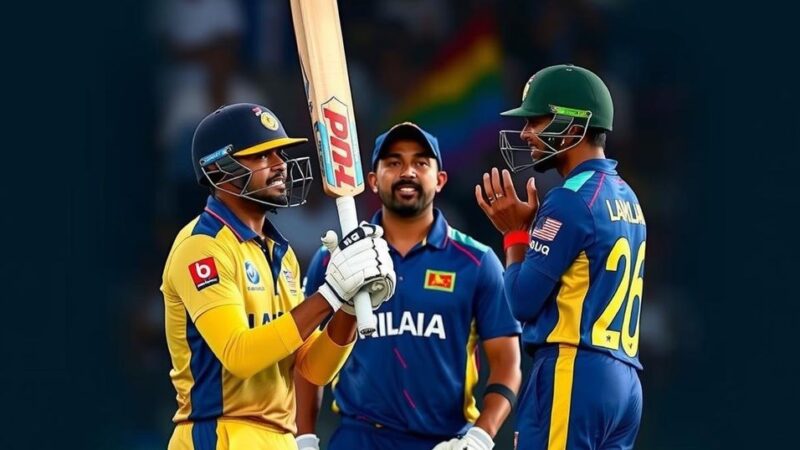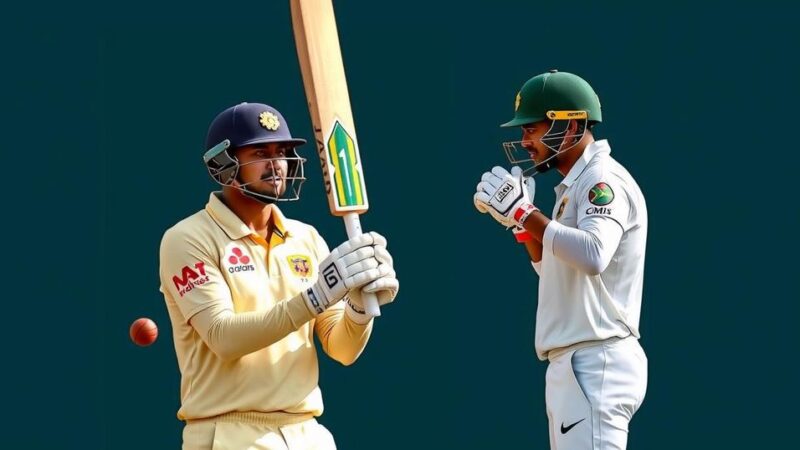Sri Lanka recorded its lowest-ever Test innings score, bowled out for just 42 runs by South Africa. The innings lasted only 83 balls, making it the shortest completed Test innings in a century. South Africa, with a lead of 281 runs, ended day two at 3-132, while Sri Lankan batsmen struggled, with Kamindu Mendis top-scoring at 13 runs. Marco Jansen was particularly outstanding, taking 7 wickets for 13 runs.
In a historic collapse, Sri Lanka was bowled out for a mere 42 runs against South Africa in the first Test match held in Durban, marking the lowest total in Sri Lankan Test history. This innings, lasting only 83 balls, is the shortest completed Test innings in a century, surpassing even the infamous 30 runs scored by South Africa against England in 1924. The South African bowlers, particularly Marco Jansen, were instrumental in dismantling the Sri Lankan batting line-up, with Jansen claiming an impressive 7 wickets for just 13 runs in 6.5 overs.
Sri Lanka’s dismal performance occurred within just 20.4 overs on the first day, leading them to trail by 281 runs as South Africa ended day two at 3 for 132. The previous low record for Sri Lanka had been 71 against Pakistan in 1994. Remarkably, during the innings, five Sri Lankan batsmen failed to score, with Kamindu Mendis managing to top the charts with a meager 13 runs. Mendis’s dismissal triggered an alarming collapse, where Sri Lanka lost four wickets without adding a run, spiraling from 4 for 32 to 8 for 32 in a matter of minutes.
The match serves as a stark reminder of the challenges faced by Sri Lankan cricket, particularly against formidable opponents like South Africa. Historically, Test matches have showcased competitive batting and bowling, yet Sri Lanka’s recent performance raises questions about the stability and strength of their batting line-up. This match further detaches them from their previous performances, where they had shown capacity to score significantly higher. Cricket, being a sport of both skill and pressure, often leads to surprising outcomes, and this instance is a critical reflection of how quickly fortunes can change during a match. Such low scores can not only affect the morale of the team but also reshape strategies as they approach their subsequent innings in the series.
In conclusion, the first Test match of the series between Sri Lanka and South Africa has etched itself into the annals of cricket history for the wrong reasons. Sri Lanka’s collapse to 42 runs emphasizes significant underlying issues in their batting structure, while South Africa’s bowling, particularly the outstanding performance from Jansen, illustrates their prowess as a formidable team. As the series progresses, Sri Lanka must regroup and strive to improve upon this low point in their cricketing journey.
Original Source: www.abc.net.au






